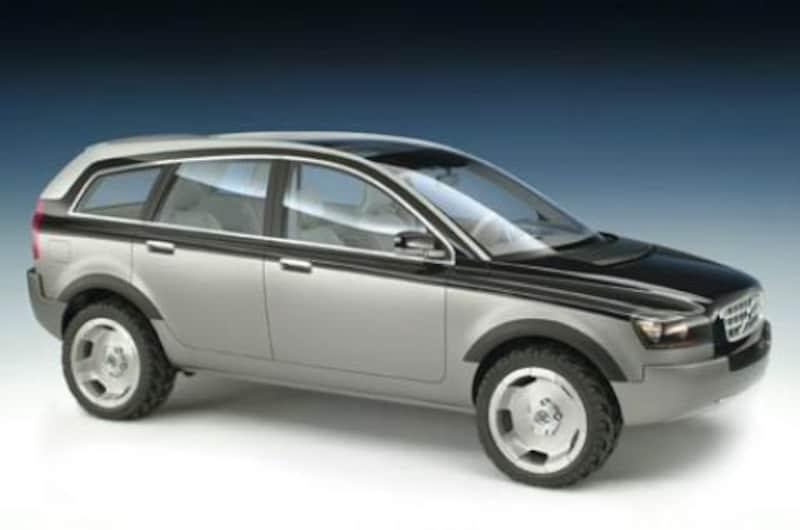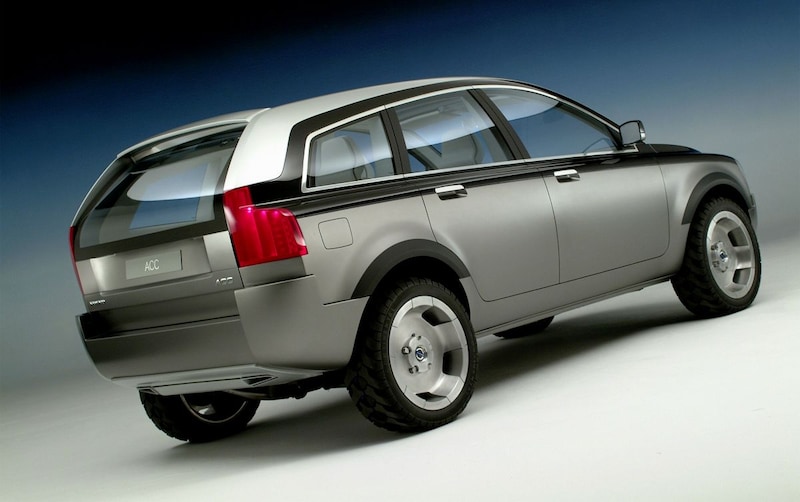An SUV: nowadays you don’t really count as a car manufacturer if you don’t have one in your model range. At the beginning of this millennium it was very different. Volvo showed the world exactly 25 years ago today its first SUV: the ‘Adventure Concept Car’, the study model that was supposed to give a preview of the XC90. That finally came in 2002.
There is something special about looking back at concept cars from the past with today’s knowledge. They are often quite extremely designed, so it is always questionable to what extent the design can survive with a production model. Sometimes that is not the case at all and nothing is done with a concept car at all, in other cases the production version can be traced very well to its concept version. The latter is certainly the case with the Volvo ACC. The very first XC90 is clearly recognizable in it.
Volvo saw the ACC as a benchmark. The brand had not previously made an SUV, so the Swedes mainly wanted to gauge the reaction of the public. In any case, our editor on duty who wrote about the ACC at the time was not very enthusiastic. “Because of that sloping roofline, it very much resembles a blown up Audi A2,” was the verdict. However, that sloping roofline was mainly optical in nature. The roof itself remained straight, but the ACC’s window line curved downwards. Volvo did not use the curved window line for the XC90, but Volvo’s style experiment can safely be called successful in terms of silhouette: Put the XC90 and the ACC next to each other and the similarities are evident.
Way ahead of its time

Looks pretty similar to the ACC, doesn’t it?
The similarities are not just limited to the silhouette. The shape of the grille and lighting has also been taken over almost unchanged in the production model, with the headlights of the XC90 actually only being slightly higher than those of the ACC. Volvo eventually stretched the taillights of the ACC to the top of the rear window, a style element that is still present on the SUV to this day. The two-tone paintwork of the ACC did not make it to the production stage, as did the large glass rear window and panoramic roof of the concept car. The first XC90 was only available with a small sliding roof above the front seats.

XC90 Excellence avant la lettre.
The interior was, certainly for 1997, quite luxurious and futuristic. The shape of the seats, the dashboard and the navigation screen that comes up turned out to be concrete harbingers for the interior of the XC90. The rest of the interior wasn’t exactly like that. With the large, vertical screen on the center console of the ACC, Volvo was in retrospect very far ahead of its time. The screen is somewhat similar to the touchscreen that is in the second generation XC90. The ACC had four seats, with a refrigerator and a television in the back. This design also appears to be progressive with today’s knowledge: later Volvo applied the same layout to the XC90 Excellence.
Beginning of an era
Volvo did not specify a power source for the ACC, other than saying at the announcement that the SUV had to meet the strict American ULEV and ULEV II emission requirements at the time and the emissions had to be at least equal to those of a ‘normal’ passenger car. The latter was not entirely successful with the five and six cylinders with which the XC90 initially came onto the market. At a later stage, a V8 also came into play. Looking back, the ‘Adventure Concept Car’ can be regarded as a successful finger exercise. Not only did Volvo not have to drastically change the design, the first XC90 also lasted a very long time. Ultimately, the model was in production from 2003 to 2014, with major and minor refurbishments in 2007, 2009, 2010 and 2012.
– Thanks for information from Autoweek.nl









